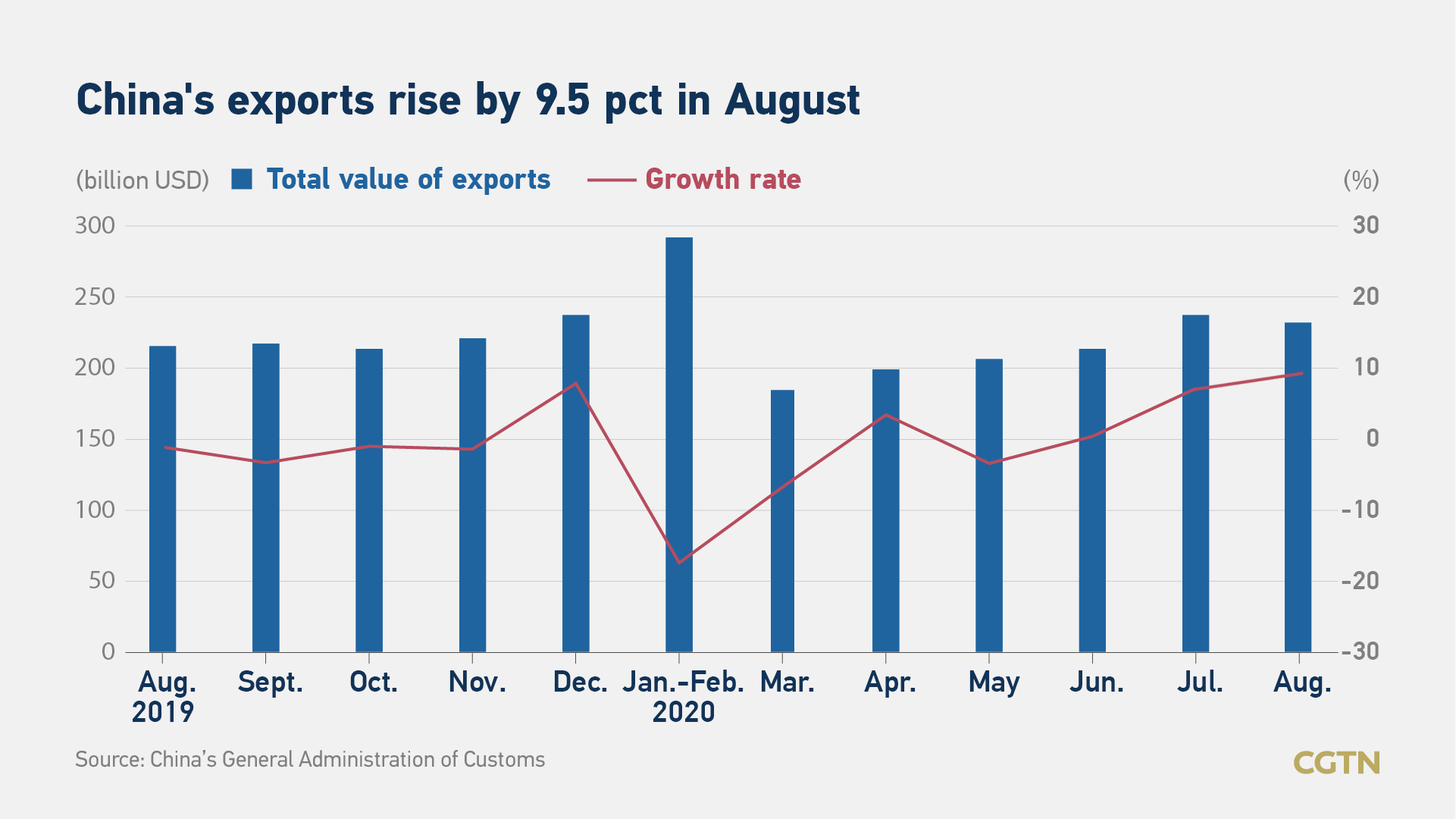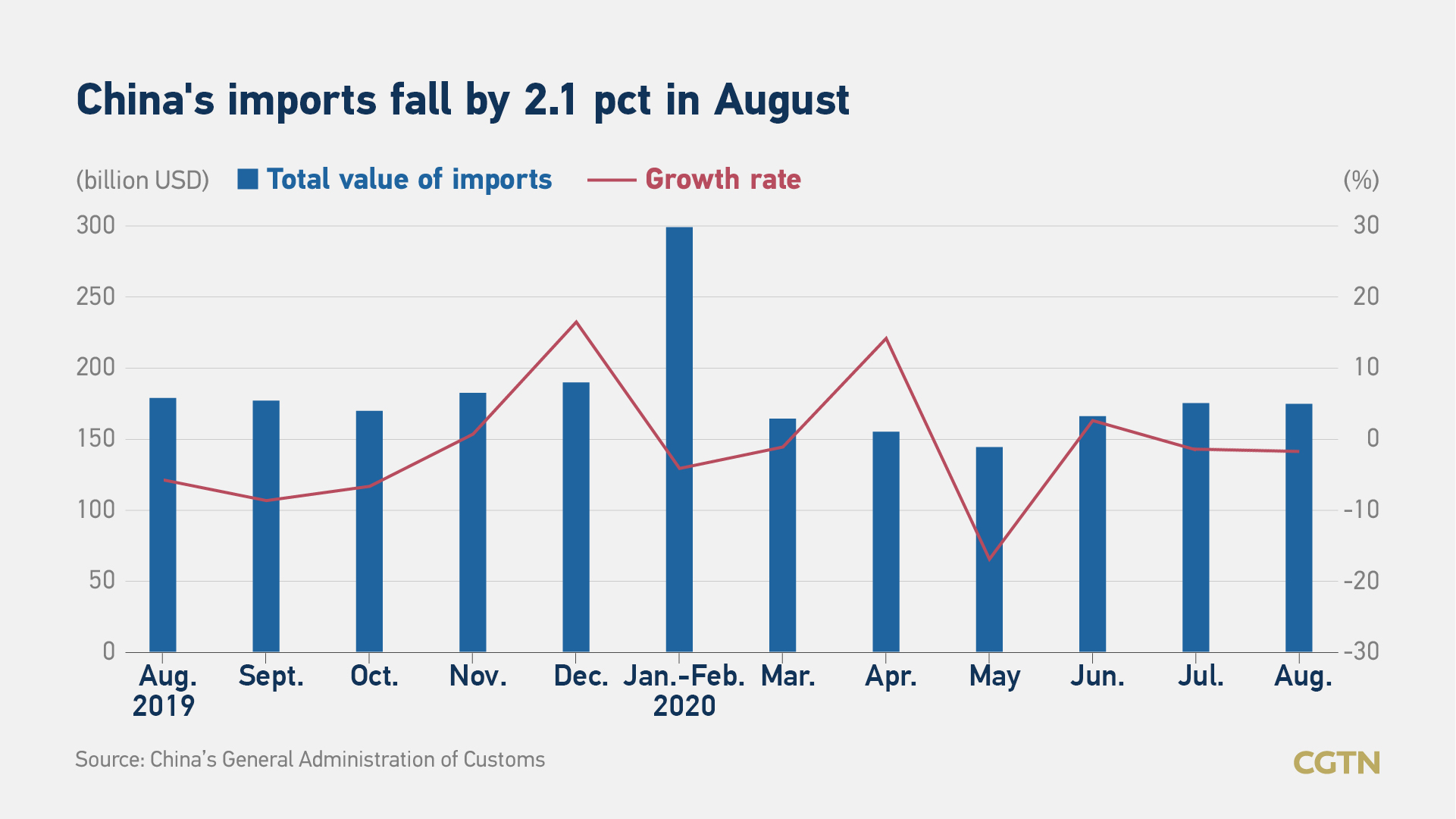China's exports rose by 9.5 percent year on year in August in U.S. dollar terms, marking the strongest gain since March 2019, customs data showed on Monday.
A Reuters poll had expected exports to climb by 7.1 percent in August from a year ago compared with a 7.2-percent rise in July, while imports were expected to rise by 0.1 percent in August from a year ago, reversing a 1.4-percent decline in July.
The country's exports eclipsed an extended fall in imports, which fell by 2.1 percent last month, shrinking for the second month in a row from a year earlier. The figure were worse than the Bloomberg median forecast of 0.2-percent growth.

The second-largest economy posted a trade surplus of 58.93 billion U.S. dollars for the month of August, outperforming the 50.50 billion U.S. dollars economists had expected and rising from 62.33 billion U.S. dollars in July, according to the General Administration of Customs (GAC).
China's surprising resilience in exports amid the global pandemic is due to some special factors, including a surge in exports of personal protective equipment (PPE) and work/study-from-home products, and a decline of exports by some emerging market competitors, which remain severely affected by the pandemic, said Lu Ting, Chief China Economist at Nomura.

Trade volume with the U.S. mildly declined
During the first eight months, China's imports and exports to ASEAN, the European Union and Japan increased, while the trade volume with the United States mildly declined.
In the interim, ASEAN acts as China's largest trading partner, with bilateral trade value ascending 7 percent to settle at 2.93 trillion yuan, accounting for 14.6 percent of the country's total foreign trade.
The United States served as China's third-largest trade partner. The total value of China-U.S. trade stood at 2.42 trillion yuan throughout the period ending August, declining 0.4 percent from a year earlier, accounting for 12.1 percent of China's total foreign trade.
Among them, exports to the U.S. were 1.87 trillion yuan, down 0.5 percent, while imports from the U.S. were 1.32 trillion yuan, down 0.8 percent, GAC data showed. China's trade surplus with the United States widened to 34.24 billion U.S. dollars in August from 32.46 billion U.S. dollars in July.
"The surge in the trade surplus could lend further strength to RMB against the U.S. dollar, but a worsening bilateral relationship might also add downside risks to RMB," said Lu.
"Growth of soybean imports fell further to 1.3 percent year on year in August from 16.8 percent in July, but we expect it to rebound in coming months as China may accelerate its purchases of soybeans from the U.S., especially during the harvesting season this year (between September and November), despite elevated uncertainty around China-U.S. trade relations," said Lu.
Chinese Vice Premier Liu He held phone talks with U.S. Trade Representative Robert Lighthizer and Treasury Secretary Steven Mnuchin last month, who reaffirmed their commitment to the Phase One trade deal. "Both sides see progress and are committed to taking the steps necessary to ensure the success of the agreement," the U.S. Trade Representative's office said.
Private sector plays a major role
The private sector further played a major role in promoting the steady growth of foreign trade. In the first eight months of this year, the private sector contributed 9.21 trillion yuan, accounting for 45.9 percent of the total trade, up by 3.9 percentage points from the same period last year, with exports accounting for 54.9 percent of the total exports.
In addition, in the first eight months, exports of textile products including masks climbed by 37.8 percent. Exports of mechanical and electrical products rose by 2.1 percent, accounting for 58.5 percent of the total exports.